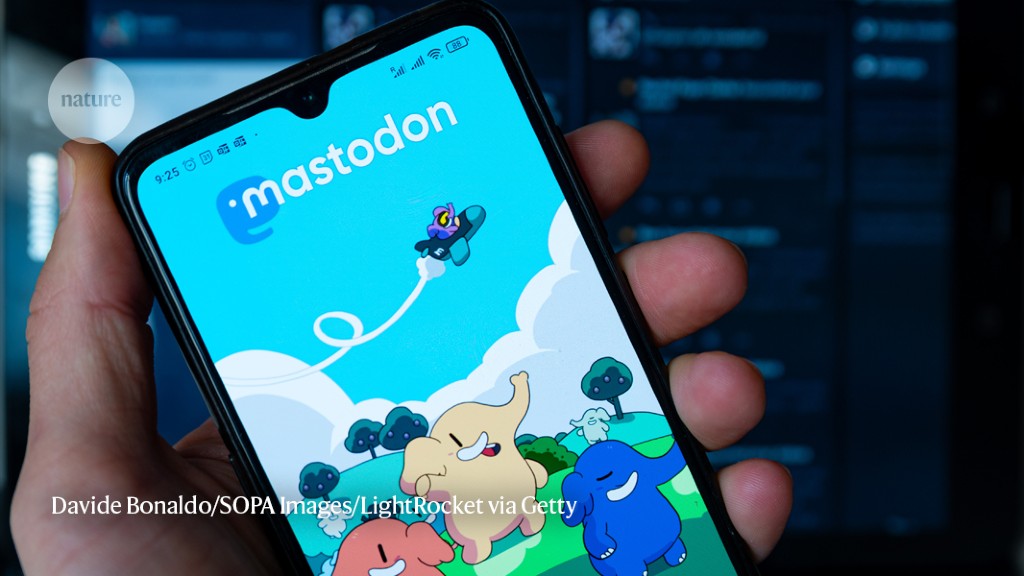How a Small Social Media Network Can Help Us Out of My Twitter Afraid of How Much I Don’t Know What I Want to Post
But unlike on Twitter, where I can easily interact with a large audience, my Mastodon network is less than 100 followers. Suddenly I had no idea what to post — a feeling that never nags me on Twitter, perhaps because the size of that network makes any post feel less consequential. I got over it quickly, though, and realized the smaller scale of Mastodon can be calming compared to Twitter’s endless stream of stimulation.
Mastodon’s new sign-ups include some Twitter users with big followings, such as actor and comedian Kathy Griffin, who joined in early November, and journalist Molly Jong-Fast, who joined in late October.
There are differences in the way the network is set up. The costs to host Mastodon users are spread among many different people and groups. But that also means users are spread out all over the place, and people you know can be hard to find — Rochko likened this setup to having different email providers, like Gmail and Hotmail.
Many people are becoming wary of the social media platform, which is beingset by bugs, shorn of half its staff and with an eccentric new owner who is changing it’s rules on the fly.
Building my Mastodon following on the web and what I didn’t: A complete newcomer to social media with Facebook, Twitter and Twitter
You must join a specific server to join some of the ones that are open to anyone, some of which require an invitation, in order to join Mastodon. There is a server operated by the nonprofit behind Mastodon, Mastodon.social, but it’s not accepting more users; I’m currently using one called Mstdn.social, which is also where I can sign in to access Mastodon on the web.
And while you can follow any other Mastodon user, no matter which server they’ve signed up with, you can only see the lists of who follows your Mastodon friends, or who your Mastodon friends follow, if the followers happen to belong to the same server you’re signed up with (I realized this while trying to track down more people I know who recently signed up).
At first, it felt as if I was starting over, in a sense, as a complete newcomer to social media. As Roberts said, it is quite similar to Twitter in terms of its look and functionality, and the iOS app is easy to use.
Roberts is not sure if she will close her account or not, but she did not find it surprising that her following grew quickly on Mastodon. Within a week of signing up and alerting her nearly 23,000 Twitter followers, she has amassed over 1,000 Mastodon followers.
Source: https://www.cnn.com/2022/11/05/tech/mastodon/index.html
Making the leap to join the scientific community: The case for a Mastodon account of how we communicate with academics and the wider scientific community
“I thought, ‘What’s it going to be like to start over again?’” she asked. It is interesting that that person is here. Here is so-and-so. They are here so we can be together.
The open-source platform has added nearly half a million users in little more than a week — but should scientists make the leap? We examine the pros and cons.
This means that individuals or organizations can set up a server (called an instance) and host users on it. Those servers often represent geographical locations or areas of interest. Users can chat with other users on a server or post in the federated universe after they join a server. Messages posted to most servers can be read by the wider Mastodon community, unless a user opts out.
In Mastodon’s message, up to 11,000 characters can be posted in a single message, known as a toot. There are different ways in which users encounter content. There are no algorithmic recommendations being seen on Mastodon. What you see is determined by who you follow and what they share.
The person says that it is similar to having drinks after a conference. “You get to chat to everybody; people who understand academia and the ground rules for academic conversations.” She compares it favourably with Twitter, where it feels like everyone is listening in and the world is watching. Ian Brown thinks that a lot of Mastodon users are academics.
Brown said that one of the strengths of Mastodon is users ability to broadcast their message to a wide range of people. This is important for scientists who are interested in communicating their research to large, non-specialist audiences. He says that this is one of the many democratizing benefits of social media.
There are other issues that might give users pause. Mastodon categorizes conversations around hashtags much more frequently than Twitter, partly because of its lack of algorithmic recommendations. But there isn’t an obvious way to corral conversations about a particular academic paper, using a DOI reference as a hashtag, because of the way that the platform’s technical architecture works. (A user has reported the issue and has asked for the functionality to be introduced.)
